Navigation
Install the app
How to install the app on iOS
Follow along with the video below to see how to install our site as a web app on your home screen.
Note: This feature may not be available in some browsers.
More options
You are using an out of date browser. It may not display this or other websites correctly.
You should upgrade or use an alternative browser.
You should upgrade or use an alternative browser.
Bee pollen...
- Thread starter kinyonga
- Start date
Yeah I was not mirco dosing thanks to someone telling me I could not overdo it..... and oh boy were they wrong. I was like lets put it in everything and on everything...Yea I use it pretty infrequently. The "wet method" with the BSFL really thins it out to where its not really visible, but you know (or hope) a tiny bit is there. I know they get micro doses in the wild, since they eat a lot of pollinators, so I am hoping that providing it via flower, instead of the jarred pollen, will be more natural. If anything, it may provide a food source for the bugs and a more natural gut load... but all of that would just be a perk if I can actually get them to bloom
Some of the orchids I have are super tiny. I dont think anything larger than the tiniest of fruit flies could actually reach the pollen or flowers. Orchids are kool.
Kaizen
Chameleon Enthusiast
So, the few studies of the wild diet do indicate generous helpings of pollinators. My guess is thus that wild chams are likely getting pollen frequently. Where I see issues is when folks mix it 50/50 with calcium as their daily dust, while simultaneously feeding their bugs tons of it too.
Kaizen
Chameleon Enthusiast
Dude, once you get a hive or two, you’ll never go without one again! My wife and I set up two adjacent to our outdoor Cham enclosures. The chams eat their fill, the bees love the flowering plants in the enclosures, and I get 60lbs of honey from each! Can’t recommend them enough.@Kaizen you crack me up! manuka honey is some good stuff!!!! part of my first aid kit for humans and chams alike.
We are hoping to move in a few years, and when we do, I hope to start an apiary. I was once a bug-a-phobe, but they really are fascinating little creatures. Bees especially.
snitz427
Chameleon Enthusiast
Yeah I was not mirco dosing thanks to someone telling me I could not overdo it..... and oh boy were they wrong. I was like lets put it in everything and on everything...
Oh for sure - there are some reputable, experienced folks who really swear by it. It can be misleading and confusing, for sure. That's where my comment about doing your own research and homework comes into play. I've blindly followed a lot of bad advice (over many topics) before learning to take advice as just advice, and doing my own research where possible. Or wait and @kinyonga will do the research for us
Klyde O'Scope
Chameleon Enthusiast
I would touch on that to add "if you say something, make sure its accurate."
snitz427
Chameleon Enthusiast
HOLY CRAP!? 60 lbs!? I have this fantasy of one day quitting my day job and running a small farmette. Plants and animals... sell soap, honey, etc at flea markets when I feel like it. Livin the dream! I suspect that it will be more like working 2 full time jobs, but the pay is good.Dude, once you get a hive or two, you’ll never go without one again! My wife and I set up two adjacent to our outdoor Cham enclosures. The chams eat their fill, the bees love the flowering plants in the enclosures, and I get 60lbs of honey from each! Can’t recommend them enough.
I didn't even consider the chams eating the bees. I am so afraid of them injuring their tongue, that I use the smallest wire mesh I can find. It also keeps pests like snakes and rodents out... but unfortunately keeps out the good stuff, too. I just have this nightmare in my mind of their tongue shooting between the wires and getting wrapped or cut. I know plenty who do it w/o issue, but it freaks me out too much. I'll have to think about how to update our designs down the road, because I would love for them to be able to snag some wild feeders - especially if we move out to the sticks (up against a preserve).
snitz427
Chameleon Enthusiast
not personally directed - just a general statement. Everyone (definitely including myself here) likes to add their opinions on subjects... and there's a lot of false information that gets regurgitated over and over as a result. The "safe plant" lists personally drive me crazy for that reason.What did I say that was inaccurate?
People will say to avoid philodendron varieties in favor of pothos. They are in the same family, and have the same toxicity, but they'll refer to pothos (the species) as safe and superior to "toxic" philodendron (an entire genus). Short of running laboratory tests, you can assume they have the same level of risk and toxicity.
Klyde O'Scope
Chameleon Enthusiast
If you've got better lists...not personally directed - just a general statement. Everyone (definitely including myself here) likes to add their opinions on subjects... and there's a lot of false information that gets regurgitated over and over as a result. The "safe plant" lists personally drive me crazy for that reason.
IME, they're usually good enough for the newer members here.
Never heard that. Doesn't mean I don't believe it—just never came across it before.People will say to avoid philodendron varieties in favor of pothos. They are in the same family, and have the same toxicity, but they'll refer to pothos (the species) as safe and superior to "toxic" philodendron (an entire genus). Short of running laboratory tests, you can assume they have the same level of risk and toxicity.
I have both, and an inchplant to boot.
snitz427
Chameleon Enthusiast
If you've got better lists...
IME, they're usually good enough for the newer members here.
Never heard that. Doesn't mean I don't believe it—just never came across it before.
I have both, and an inchplant to boot.
Yes - a better list, IMO, is the ASPCA's as mentioned previously. Its not complete (unless you find one with about half a million plants on it), but its the most thorough "list" I've found. Most of the other lists are more trial-and-error based, or are just copied from another list that was trial and error. There's loads of info out there if you really want to get granular (and use scientific sources), but that's likely overkill. You're looking to avoid those known as most toxic - and generally, if a plant has toxic traits, that info is easy to find.
Its the writing off of other plants as potentially unsafe, because they did not make the short lists of "cham safe plants."
If you have yet to hear someone say avoid philodendron, and recommend pothos, you must not read too many of the plant posts. It comes up constantly. The irony is that tradescantia is also considered toxic, but due to its sap, not oxalates.
snitz427
Chameleon Enthusiast
Back to the topic at hand - here’s some orchids currently in, or going into my vivs. Most pictured have blooms that are smaller than 1/8th inch.
I do have some with larger blooms, but you could harvest all of the pollen from every flower and prob still not have enough to put into a tiny pile.
When I pollinate my anthuriums (by hand), the pollen is extremely fine and powdery. Finer than baby powder. I am not sure how bee pollen is processed (by both bees and humans), but what I get at the store is very different from the pollen my plants produce.






I do have some with larger blooms, but you could harvest all of the pollen from every flower and prob still not have enough to put into a tiny pile.
When I pollinate my anthuriums (by hand), the pollen is extremely fine and powdery. Finer than baby powder. I am not sure how bee pollen is processed (by both bees and humans), but what I get at the store is very different from the pollen my plants produce.
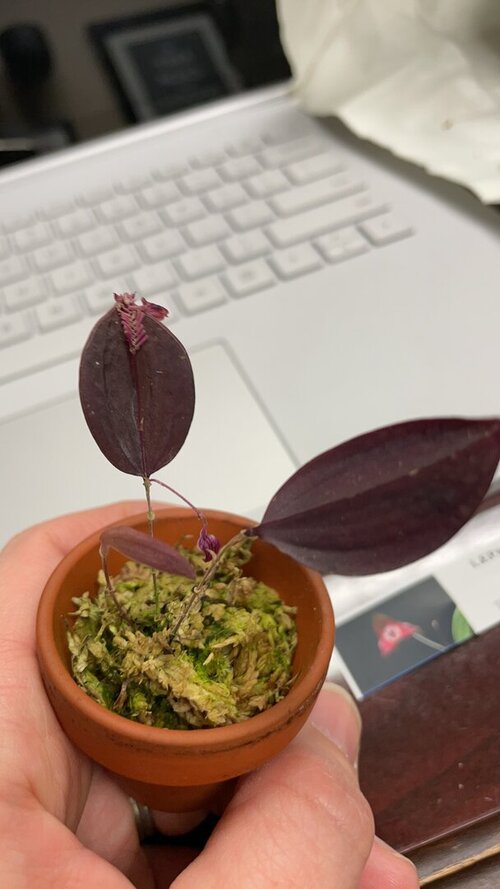
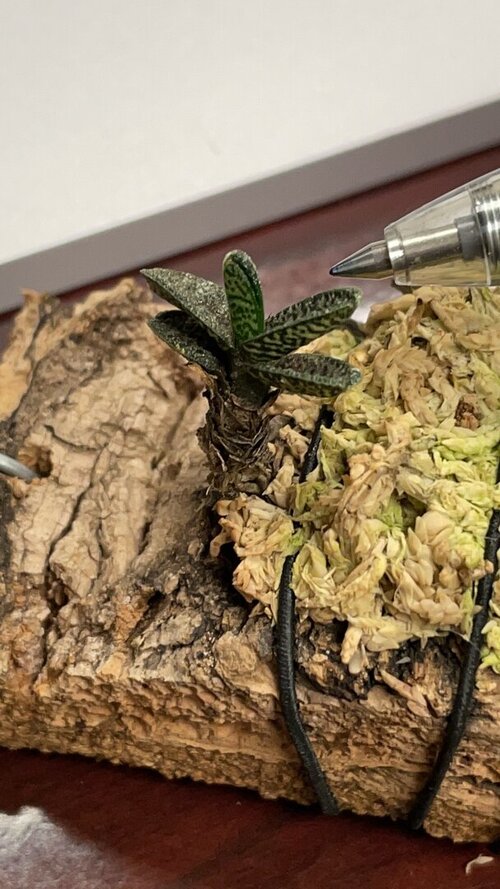
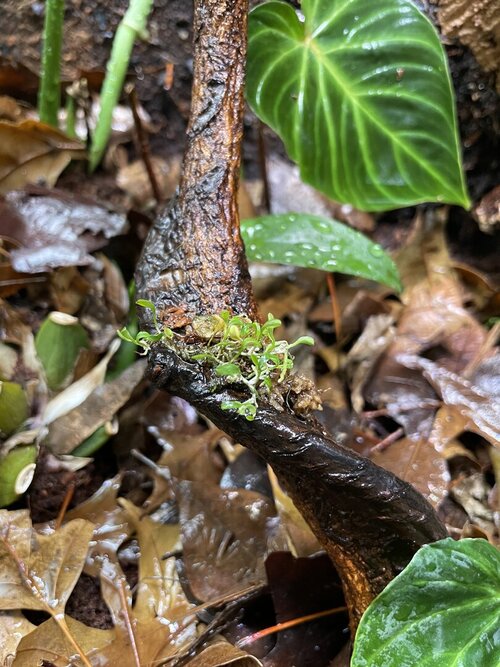
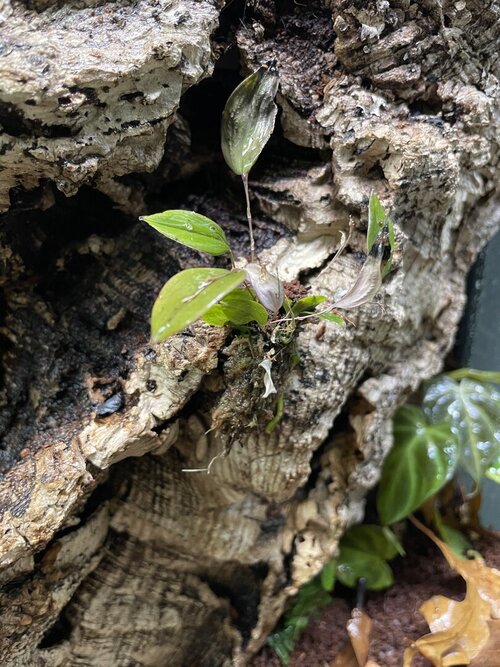
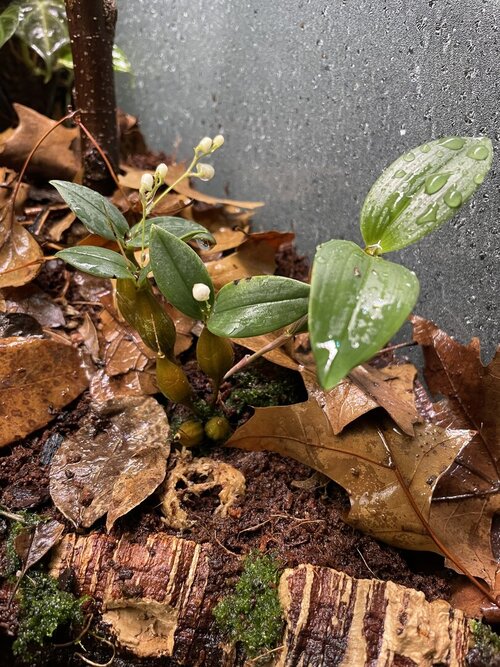
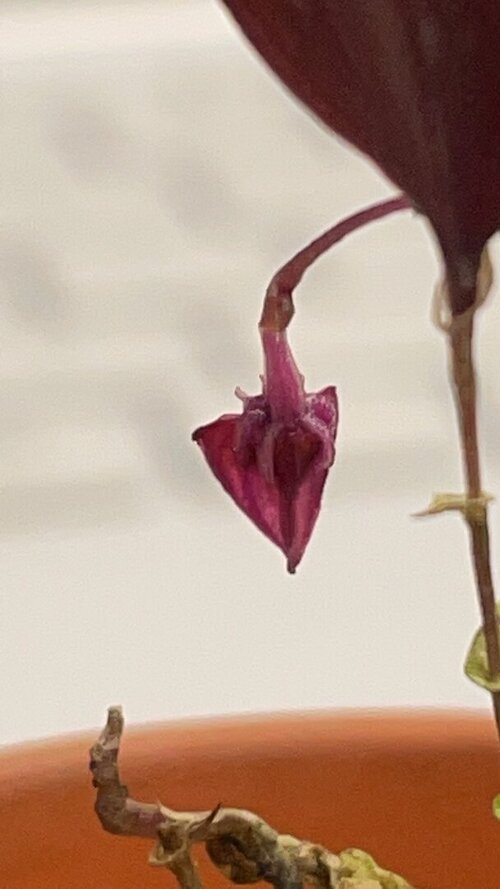
Kaizen
Chameleon Enthusiast
I totally understand your concerns. And ultimately, you won’t enjoy the hobby if you’re constantly worried, so go with what’s comfortable for you. Personally, I use 1” chicken wire on some of my parsons enclosures. The odd bird makes it’s way in sometimes.HOLY CRAP!? 60 lbs!? I have this fantasy of one day quitting my day job and running a small farmette. Plants and animals... sell soap, honey, etc at flea markets when I feel like it. Livin the dream! I suspect that it will be more like working 2 full time jobs, but the pay is good.
I didn't even consider the chams eating the bees. I am so afraid of them injuring their tongue, that I use the smallest wire mesh I can find. It also keeps pests like snakes and rodents out... but unfortunately keeps out the good stuff, too. I just have this nightmare in my mind of their tongue shooting between the wires and getting wrapped or cut. I know plenty who do it w/o issue, but it freaks me out too much. I'll have to think about how to update our designs down the road, because I would love for them to be able to snag some wild feeders - especially if we move out to the sticks (up against a preserve).
snitz427
Chameleon Enthusiast
I totally understand your concerns. And ultimately, you won’t enjoy the hobby if you’re constantly worried, so go with what’s comfortable for you. Personally, I use 1” chicken wire on some of my parsons enclosures. The odd bird makes it’s way in sometimes.
Do your parsons prefer wings, breast, or drumsticks
Kaizen
Chameleon Enthusiast
Don’t tel anyone, but I have all sorts of toxic plants in my enclosures. I try to temper my flare for rule-flouting when it comes to my only veiled, but even then…Keep this between us, as I’ll be crucified if the wider public found out.not personally directed - just a general statement. Everyone (definitely including myself here) likes to add their opinions on subjects... and there's a lot of false information that gets regurgitated over and over as a result. The "safe plant" lists personally drive me crazy for that reason.
People will say to avoid philodendron varieties in favor of pothos. They are in the same family, and have the same toxicity, but they'll refer to pothos (the species) as safe and superior to "toxic" philodendron (an entire genus). Short of running laboratory tests, you can assume they have the same level of risk and toxicity.
Kaizen
Chameleon Enthusiast
To be honest, they rarely bother. Parson’s are pretty lazy chameleons.Do your parsons prefer wings, breast, or drumsticks
Lindasjackson
Chameleon Enthusiast
I never thought of that but it’s true! Thanks!I have had pretty good success w/o the fertilizers...but I am also of a weird mindset where I choose orchids based on their foliage, and not the blooms! If it blooms, its a bonus. But I have gotten blooms w/o fertilizer use - its been more dependent on lighting for me. Some require cooldown periods, too. Since I dont care if it flowers, I just let it do its thing in the enclosure. If I see actual signs of nutrient deficiency, I'll add to it, but otherwise the plants have all done pretty well just living off the chameleon & bug poop + tiny bits of decaying material at their roots. Most epiphytes get their nutrients from the rain, poop, and decaying matter that's gotten tangled in the roots.
Could perhaps try throwing a tiny bit of insect frass on the roots. Mine have a tiny amount of decaying matter from leaf litter and such - but otherwise I dont add any fertilizer.
snitz427
Chameleon Enthusiast
To be honest, they rarely bother. Parson’s are pretty lazy chameleons.
I have a Cristifer from Craig… I almost named her sid because she is a SLOTH. but wave a silkworm in her cage and she moves like she’s on wheels heh
I knew you were trouble!Don’t tel anyone, but I have all sorts of toxic plants in my enclosures. I try to temper my flare for rule-flouting when it comes to my only veiled, but even then…Keep this between us, as I’ll be crucified if the wider public found out.
You're the only one I've heard besides me who refers to them as sloths!I have a Cristifer from Craig… I almost named her sid because she is a SLOTH. but wave a silkworm in her cage and she moves like she’s on wheels heh
Similar threads
- Replies
- 6
- Views
- 2K





